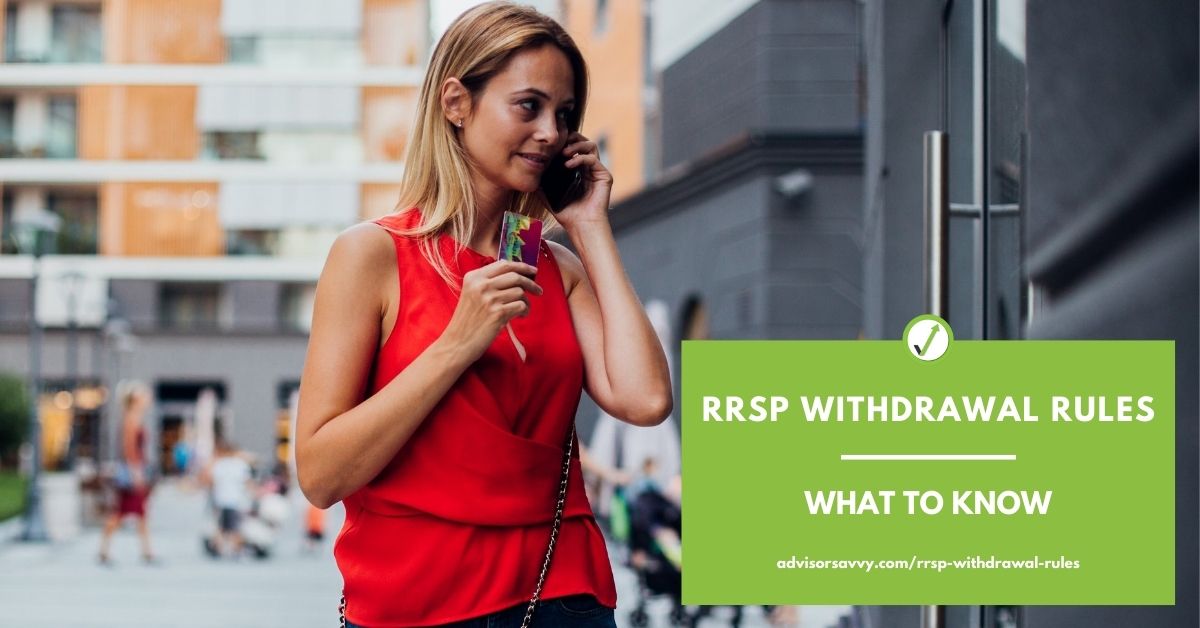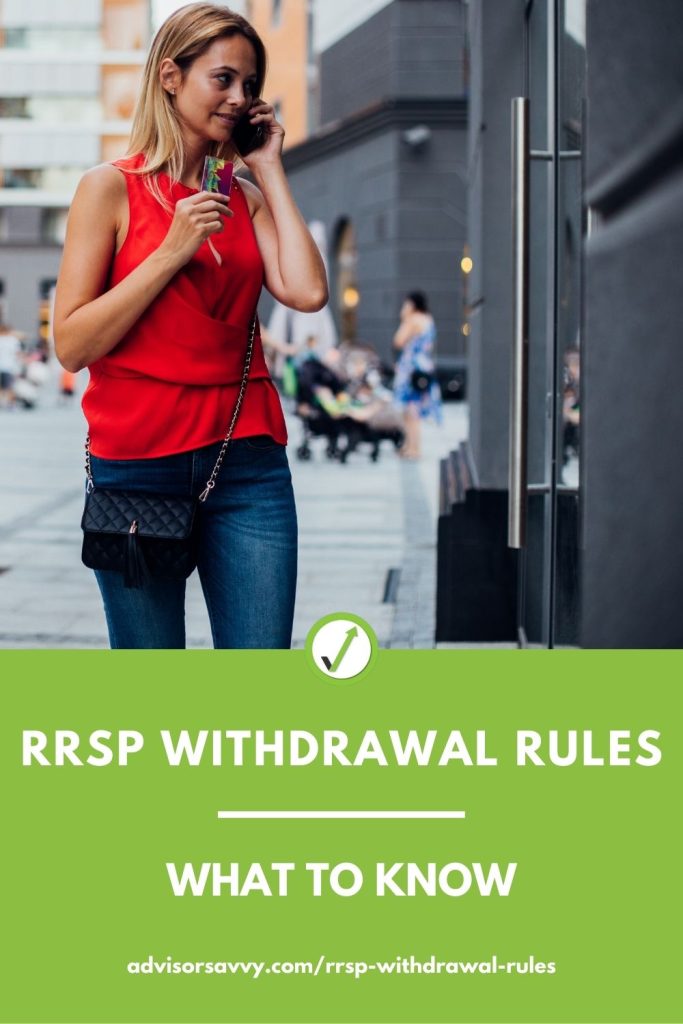
Registered Retirement Savings Plans (RRSPs) help you save for your future. Many Canadians, however, may want or even need access to that pot of funds early. If that’s you, it’s important to understand the RRSP withdrawal rules so you can make the best decision for your financial situation.
Money set aside for an RRSP is meant to stay there until retirement. Because of that, it’s not easy to take the money out early. That’s not to say you can’t — you absolutely can. But there are rules around RRSP withdrawals, and in some cases, you might even take a financial hit.
Let’s take a look at the implications of an RRSP withdrawal.

Can I take money out of my RRSP without penalty?
Typically, investing in an RRSP is a key piece of retirement planning. However, as mentioned above, there are circumstances where you can withdraw money from this fund early — and without paying tax.
Here are some of these situations and the RRSP withdrawal rules:
The Home Buyers’ Plan (HBP)
Designed to help new home buyers get into the real estate market, with the Home Buyers’ Plan (HBP), buyers can withdraw up to $35,000 (one-time) for a down payment on the purchase of a first home. This amount was previously $25,000 but was bumped up in 2019. If you’re purchasing a home with a partner who also qualifies as a first-time buyer, they can withdraw the same amount (up to $35,000), meaning you’ll have $70,000 to work with as a down payment.
While the withdrawal is tax-free, you must pay the full amount back within 15 years. Funds must also sit in an RRSP for a period of 90 days before you can withdraw them for the HBP. Finally, once you’ve closed on the purchase of your home/taken possession, you have 30 days to use the funds.
Under the withdrawal rules, funds are repaid through a minimum contribution to your RRSP every year (1/15th of the total). Note: these repayments don’t affect your contribution room, and you only need to start repaying the year after the withdrawal.
The Lifelong Learning Plan (LLP)
The Lifelong Learning Plan is designed to help you go back to school to complete or enhance your education. Under the LLP, you can withdraw up to $20,000 (tax-free) over a four-year span, up to a max of $10,000 per calendar year. The plan applies to a full-time program for yourself, or a spouse or common-law partner, but not children. (For more on saving for your child’s education, see our article on Registered Education Savings Plans or RESPs!)
As part of the withdrawal rules, you must pay back your LLP withdrawal within 10 years. Generally, you’ll pay back 10% of the total amount you withdrew, annually.
Spousal RRSP withdrawal rules
Spousal RRSPs are like a typical Registered Retirement Savings Plan. The difference is that your spouse/common-law partner is the owner (“annuitant”) even if you’re making the contributions. The whole idea is to draw retirement income — which is taxed — from the spouse with a lower tax rate. The end goal is simply to help lower the tax burden.
When it comes to withdrawals, similar to the previous examples, the money must sit in your spouse’s RRSP. In this case, it’s for a period of three full years. If you withdraw the funds before this, it counts as income and is taxed according to your own tax rate, not the lower rate of the owner.
For more, visit the Canadian government’s RRSPs and related plans page.
Locked-in Retirement Accounts (LIRA) withdrawal rules
Locked-In Retirement Accounts (LIRAs) are a similar type of registered account to the RRSP. Think of them as cousins. They can also go by Locked-In Retirement Savings Plans (LRSP). What are they? If you are lucky enough to have a job that offers a pension, if you leave the company or end up laid off, this pension gets transferred to a LIRA. The LIRA acts like a safe for your pension and you can’t contribute anything extra.
As the name implies, funds are lock-in — intended to be saved exclusively for retirement income. Similar to the RRSP-to-RRIF conversion, LIRAs need to be converted to a tax-sheltered Life Income Fund (LIF) so you can start receiving (taxable!) retirement income. This conversion must happen no later than December 31st of the year you turn 71, and you can start making withdrawals the following year.
Like an RRSP, rules only allow for withdrawals from a LIRA under very special circumstances. Acceptable reasons largely fall under the umbrella of ‘financial hardship.’ These include:
- You have high medical expenses or costs related to a disability
- You need to make upgrades to your home to accommodate your disability
- The rent on your principal residence (or that of your partner) is in arrears, and you’re facing eviction
- The mortgage on your principal residence is at risk of foreclosure
- You need the first and last months’ rent
- You’re expecting a big drop in income, to a very low level
Additional acceptable withdrawal reasons include:
- Shortened life expectancy
- You are no longer a resident of Canada
- If you have a small balance
- If you’re 55 or older, you can do a one-time 50% transfer to an account like an RRSP
EI and RRSP withdrawal rules
The good news is that you can withdraw funds from your RRSP while on Employment Insurance. It is not considered new earnings, but rather your own funds you are accessing. As a result, there is no additional financial hit. You are, however, still subject to the same withholding tax, and that money is taxed as income once tax season rolls around.
When can you withdraw from an RRSP?
Even outside of the above situations, RRSP withdrawals can technically happen at any time. If you withdraw from your RRSP before you retire, those funds add to your income for that year and are taxed accordingly.
RRSP conversion into a RRIF
Registered Retirement Income Funds (RRIFs) are essentially a continuation of RRSPs, with some caveats. When you’re winding down your career, your RRSP must be converted into an RRIF. All those savings you’ve accumulated are now going to become your taxable retirement income.
While anyone over the age of 55 can open an RRIF, this conversion of RRSP-to-RRIF must happen no later than December 31st of the year you turn 71. Withdrawals can start the following year.
Alternatively, when it comes time to close your RRSP, you can withdraw the funds as a lump sum and pay a withholding tax.
How to withdraw funds from an RRSP
There are a few ways to withdraw funds. And not all withdrawals are subject to an RRSP withdrawal penalty, as mentioned above. However, it’s important to know RRSP withdrawal rules.
Consult the financial institution that set up your accounts to withdraw funds from your RRSP. You will submit a government form. The form differs depending on the reason for the withdrawal (for instance, there are different forms for the HBP and the LLP).
Regardless of the reason, all withdrawals are subject to a withholding tax. This tax is automatically deducted from your withdrawal and sent to the government. So make sure you understand the RRSP withdrawal rules.
Related Reading: How to Withdraw Money from TFSA
How much tax do you pay if you withdraw from an RRSP?
The amount of tax you pay on an RRSP withdrawal depends on the tax bracket you fall into for that year. For example, it becomes part of your existing income if you are still working. However, it is taxed as your only income in retirement.
It also depends on where you live. The rates are:
- 10% (5% in Quebec) on amounts up to $5,000
- 20% (10% in Quebec) on amounts over $5,000 up to including $15,000
- 30% (15% in Quebec) on amounts over $15,000
Are there hidden fees associated with RRSP withdrawals?
There are no hidden feeds for RRSP withdrawals. However, it’s important to be aware of some hidden costs that occur outside of the RRSP withdrawal rules.
Loss of compound interest
The more you save, the more you earn on compound interest as your account grows. Taking out a few thousand dollars today means it no longer contributes to the growth of your account. Not mention what was once untaxed money is now taxed.
In other words, leaving that money in your RRSP generates a lot more future income than taking it out today.
Higher taxes on withdrawal
Most Canadians have a lower income in retirement. So tax implications are lower when you wait to withdraw RRSP funds until then. But the more you make, the more you pay in taxes. Withdrawing from your RRSP early, while you are working, ultimately leaves less of your own money in your pocket, long term.
Loss of contribution room
There is a yearly RRSP contribution maximum. If you don’t contribute the max, any leftover room rolls over every year, until you turn 71. There is one thing to be aware of, however. With a TFSA, you can re-contribute back into the fund. However, with an RRSP, once you contribute, that room is lost forever.
RRSPs are meant to accrue interest, not to be touched until retirement. However, there are good and reasonable reasons to withdraw early. Knowing the benefits and downsides, as well as the costs and long-term implications, is the best way to know if it is wise to withdraw from your RRSP. When you know the RRSP withdrawal rules, you can make the best decisions for your situation.
As always, the best thing you can do is consult with your financial advisor. They can discuss RRSP withdrawals with you, and help you figure out what works best for your needs.
